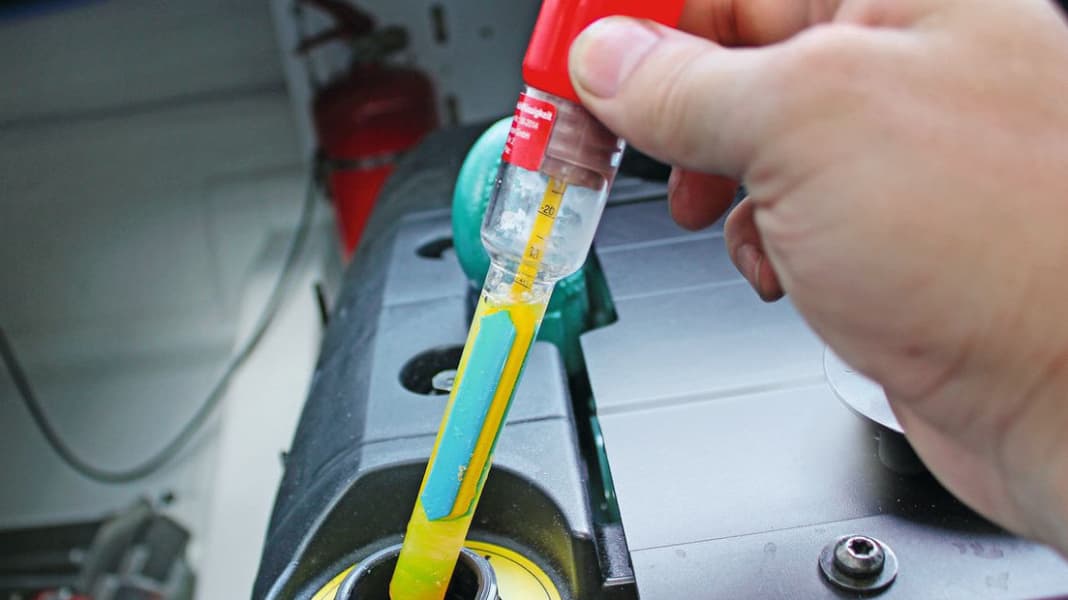
When water freezes, it expands. A truism. More precisely, water increases in volume by up to ten per cent when it freezes. If it is in a closed space such as a container or tank, it develops considerable pressure on the outer walls.
"You have to put antifreeze in all the pipes so that they don't burst," the novice is told as good advice when winterising the boat for the first time, "The alcohol in it is what keeps it frost-free." After all, the pungent, sweet smell of alcohol also stings your nose when you turn on the windscreen wipers in your car.
More information? Part 2 of the winter journal "The right mix" can be found with further explanations in BOOTE issue 11/2021 from 20 October 2021 at newsagents or online atDelius Klasing Shop.
But could I also use windscreen washer fluid to winterise my drinking water tank, for example? Many boat owners stand in the DIY store every autumn and ask themselves about the differences between the brightly coloured liquids. Doesn't it matter what I use as long as it contains enough alcohol?
Not at all. This is because antifreeze is not only intended to protect against frost, and the different agents have distinct differences in their properties. If used incorrectly, the ship can suffer serious damage and, in the worst case, even sink.
Glycol instead of alcohol
The reason why a mixture of ethanol (colloquially: alcohol) and water only freezes at very low temperatures lies in the difference between the molecules of ethanol and water. They are so different that it is almost impossible for the water to form a common ice crystal lattice because it is permanently disturbed by the ethanol molecules mixed in it. This is why the mixture remains liquid even in winter. At least up to very extreme temperatures. With most antifreezes down to minus 50 degrees. The ethanol therefore lowers the freezing point of water.
With its specific freezing point of minus 114 degrees Celsius, ethanol is generally very suitable for protecting against frost. This is why it is also used in defrosting products such as door de-icer. But antifreeze also has other functions. When used in the engine, it is primarily a coolant. However, ethanol with a boiling temperature of 78 degrees is not at all suitable for this application, as the coolant would begin to boil even earlier than water. Boat and car engines usually operate at 90 degrees.
This is the reason why the bivalent alcohol ethylene glycol or colloquially "glycol" is used in coolants instead of monohydric alcohol. Although the melting point of pure glycol is only minus 15 degrees, in combination with water the solidification temperature is even lower. A glycol-water mixture in a 1:1 ratio only freezes at minus 40 degrees.
Although glycol is derived from ethanol, it is a completely different liquid. The viscosity, for example, is much higher and the fluid feels almost oily. This is an advantage because it lubricates moving parts such as the cooling water pump and thermostat at the same time.
More on the topic:
